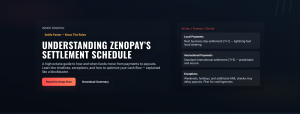Building a fintech company used to be a long, expensive, and complicated process. From designing a secure infrastructure to meeting compliance requirements, founders had to juggle dozens of challenges before even launching.
Today, Banking-as-a-Service (BaaS) has transformed the landscape. Thanks to modern APIs and financial infrastructure providers, businesses can now embed payments, wallets, loans, and cards directly into their products without starting from scratch. This shift allows founders to focus on what matters most—building user experiences that solve real customer problems.
But let’s be clear: building a successful fintech product is not just about plugging into an API. Long-term success requires a deep understanding of product-market fit, customer acquisition, monetization strategies, compliance, and continuous iteration.
In this guide, we’ll walk you through the fundamentals, key considerations, and best practices for building a scalable fintech business.
How Fintech Businesses Work
At its core, a fintech company delivers financial services digitally—whether through a mobile app, web platform, or API integration. Depending on the model, fintech can look very different:
- Direct-to-Consumer Platforms: Apps or sites offering financial services directly (e.g., an investment or savings app).
- Embedded Finance: Businesses that aren’t primarily financial but integrate financial services (e.g., ride-hailing apps with driver payouts).
- Financial API Services: Providers like ZenoPay that offer APIs for payments, payouts, and financial data, enabling developers to integrate financial services seamlessly.
- Partnership Models: Retailers, telcos, or enterprises issuing branded cards and accounts in collaboration with banks.
- Decentralized Finance (DeFi): Blockchain-based financial services that cut out traditional intermediaries.
Behind every fintech product lies a mix of essential components:
- Payment Gateway – Handles secure transaction authorizations.
- Payment Processor – Routes funds between banks and merchants.
- Merchant Accounts – Enable businesses to accept and manage digital payments.
- Security & Compliance Layers – Protect user data, prevent fraud, and ensure regulatory compliance.
- User Experience Layer – Where customers interact with the product (apps, dashboards, web portals).
- Backend Services – Business logic, reporting, integrations, and transaction monitoring.
Key Points to Consider When Building Your Fintech Application
1. Product-Market Fit
The foundation of every successful fintech company is solving a real, painful problem for a clearly defined audience.
- Understand your customers’ frustrations.
- Start small with an MVP and test with real users.
- Iterate based on feedback before scaling.
If you don’t deeply understand your target audience, even the most advanced technology won’t guarantee adoption.
2. Monetization Strategies
Revenue models in fintech vary, but the most common include:
- Transaction Fees – A percentage cut per payment processed.
- Lending – Revenue from interest and origination fees.
- Subscriptions – Premium plans, membership tiers, or SaaS-style billing.
- Locked Fund Fees – Charging for early withdrawals on locked accounts.
ZenoPay’s advice: Don’t rely on a single revenue stream. Instead, combine models that fit your audience while remaining competitive.
3. Customer Acquisition & Retention
The fintech space is crowded. To stand out:
- Offer incentives (cashbacks, bonuses, referrals).
- Deliver exceptional customer experience (intuitive onboarding, fast support).
- Provide educational content (guides, explainers, financial literacy tools).
Winning trust and loyalty in fintech often comes down to simplicity, transparency, and reliability.
4. Infrastructure & Technology
Instead of reinventing the wheel, fintech companies today have two main paths:
- Direct Bank Partnerships – Maximum control but higher compliance burden.
- BaaS Providers – Faster launch, managed compliance, scalable APIs.
On top of this, modern fintech must leverage:
- Cloud Platforms (AWS, GCP, Azure) for scalability.
- Automation for onboarding, fraud detection, and KYC.
5. Compliance & Security
Financial services are heavily regulated. Ignoring compliance is not an option.
- Licensing: Understand country-specific laws before expanding.
- Data Security: Use encryption, tokenization, and MFA to secure customer data.
- KYC & AML: Implement strong checks to prevent fraud and money laundering.
ZenoPay’s APIs already come with compliance-ready tools to reduce this burden for founders.
6. Continuous Testing & Iteration
Customer needs evolve—your product must evolve too.
- Engage regularly with users.
- Collect feedback through usage data.
- Iterate and launch improvements fast.
The most resilient fintech businesses treat growth as a marathon, not a sprint.
How ZenoPay Helps You Build at Scale
At ZenoPay, we provide the infrastructure and tools that allow you to focus on delighting customers while we handle the heavy lifting of payments, compliance, and scalability.
Our core solutions include:
- ZenoPay Checkout – A customizable checkout experience supporting cards, wallets, mobile money, and bank transfers.
- ZenoPay APIs – Flexible APIs for payments, payouts, and financial data, enabling you to embed financial services into any application.
- ZenoPay Verification – Built-in tools for KYC, transaction validation, and fraud prevention.
- ZenoPay Subscriptions – Automate recurring billing across multiple currencies.
- ZenoPay Virtual Accounts – Create dedicated virtual accounts for customers to simplify collections and reconciliation.
By taking care of infrastructure, compliance, and security, ZenoPay lets you scale faster, launch with confidence, and focus on building products your customers love.
🚀 Ready to build your fintech solution?
Get started with ZenoPay today →



